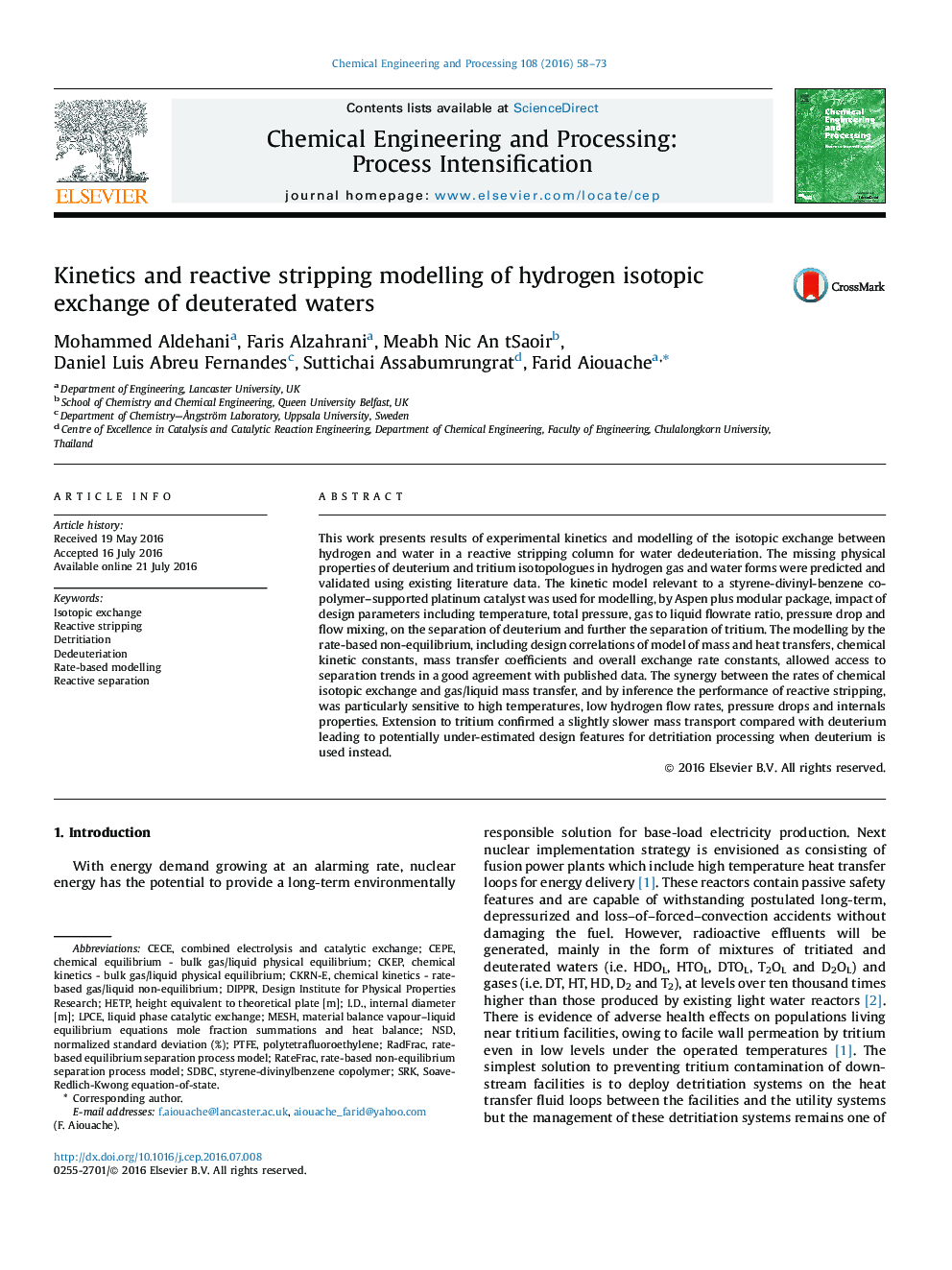| Article ID | Journal | Published Year | Pages | File Type |
|---|---|---|---|---|
| 687033 | Chemical Engineering and Processing: Process Intensification | 2016 | 16 Pages |
This work presents results of experimental kinetics and modelling of the isotopic exchange between hydrogen and water in a reactive stripping column for water dedeuteriation. The missing physical properties of deuterium and tritium isotopologues in hydrogen gas and water forms were predicted and validated using existing literature data. The kinetic model relevant to a styrene-divinyl-benzene co-polymer–supported platinum catalyst was used for modelling, by Aspen plus modular package, impact of design parameters including temperature, total pressure, gas to liquid flowrate ratio, pressure drop and flow mixing, on the separation of deuterium and further the separation of tritium. The modelling by the rate-based non-equilibrium, including design correlations of model of mass and heat transfers, chemical kinetic constants, mass transfer coefficients and overall exchange rate constants, allowed access to separation trends in a good agreement with published data. The synergy between the rates of chemical isotopic exchange and gas/liquid mass transfer, and by inference the performance of reactive stripping, was particularly sensitive to high temperatures, low hydrogen flow rates, pressure drops and internals properties. Extension to tritium confirmed a slightly slower mass transport compared with deuterium leading to potentially under-estimated design features for detritiation processing when deuterium is used instead.
